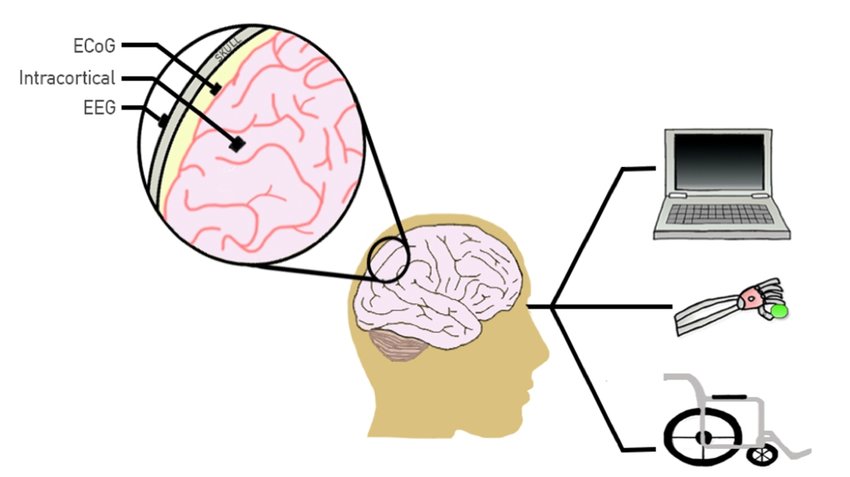Your Mind on Mobile: The Future of Brain-Computer Interfaces
Imagine controlling your smartphone with just your thoughts. No more swiping, tapping, or fiddling with finicky fingerprint scanners. Brain-computer interfaces (BCIs) are rapidly evolving, and mobile devices could be one of the biggest beneficiaries.
What is a BCI?
A BCI is a system that bridges the gap between your brain and an external device. It detects electrical signals in your brain and translates them into commands. This technology has the potential to revolutionize how we interact with the world, and our smartphones are a perfect platform for this innovation.
Mobile BCIs: A Game Changer
Smartphones are already ubiquitous, and integrating BCIs could make them even more intuitive and accessible. Here are some exciting possibilities:
- Assistive Technology: For people with motor impairments, BCIs could be a game-changer. By using brainwaves or even eye movements, they could control basic phone functions like making calls, sending messages, or even playing games.
- Enhanced Accessibility: Imagine scrolling through social media feeds, selecting apps, or even typing with just your thoughts. BCIs could make smartphones even more user-friendly for everyone.
- Augmented Reality (AR) Control: Imagine controlling AR applications in real-time using your mind. BCIs could allow for a more immersive and interactive AR experience.
Challenges and Considerations
While the potential of mobile BCIs is vast, there are some challenges to consider:
- Accuracy and Speed: Current BCI technology requires training and may not be as fast or accurate as traditional touchscreens.
- Security and Privacy: The ethical implications of reading brain signals need careful consideration.
- Device Integration: Developing comfortable and non-invasive BCIs that seamlessly integrate with smartphones is an ongoing challenge.
The Future is Bright
Despite the challenges, the future of mobile BCIs looks promising. As the technology advances, we can expect to see more user-friendly interfaces, improved accuracy, and wider applications. Brain-computer interfaces have the potential to transform the way we interact with our mobile devices, making them more intuitive, accessible, and powerful than ever before.
This is just the beginning of the BCI revolution. Stay tuned for exciting developments that will change the way we connect with technology in the future!
Brain-Computer Interface Applications:
Brain-computer interfaces (BCIs) hold immense potential across various fields. Here’s a breakdown of some key BCI applications:
Medical Applications:
- Assistive Technologies: BCIs can be life-changing for individuals with motor impairments like ALS or spinal cord injuries. They can regain control over functions like communication (spelling software), operating wheelchairs, or even controlling prosthetic limbs.
- Rehabilitation: BCIs can play a crucial role in stroke or trauma rehabilitation by helping patients re-learn motor control and restore lost function.
Daily Life Applications:
- Communication: Imagine composing messages or emails directly through your thoughts! BCIs can revolutionize communication for people with disabilities or even offer hands-free options for everyone.
- Control of Devices: Operating your smart home appliances, controlling a computer cursor, or even playing games – all through brain signals! BCIs can make interacting with technology a more seamless mind-machine experience.
Augmented Reality (AR) and Virtual Reality (VR):
- Enhanced Experiences: BCIs can provide a more immersive and interactive experience in VR or AR environments. Imagine manipulating objects or navigating virtual worlds simply by thinking about it!
Future Potential:
- Brain-Machine Integration: BCIs might one day allow for a deeper connection between the brain and machines. This could have applications in various fields, from piloting drones to controlling complex robotic systems.
- Enhanced Learning: BCIs might play a role in improving learning and memory by providing new ways to interact with educational content or even directly stimulate brain activity.
It’s important to remember that BCI technology is still under development. Challenges like accuracy, speed, and ethical considerations surrounding privacy need to be addressed. However, the potential of BCIs to improve our lives, restore lost function, and redefine human-computer interaction is truly exciting.
Brain-Computer Interface Device and examples:
Brain-computer interface (BCI) devices are systems that can capture signals from the brain and translate them into commands for external devices. These devices can be broadly categorized into two main types: invasive and non-invasive.
Invasive BCIs
Invasive BCIs require surgical implantation of electrodes directly into the brain. This offers the highest quality signals but is a more complex and risky procedure.

Here are some examples of invasive BCI devices:
- Neuralink: This device, developed by Elon Musk’s company, is a high-density electrode array that is implanted into the cerebral cortex. It is still in the early stages of development, but it has the potential to be used for a variety of applications, including restoring lost movement and vision.
Non-invasive BCIs
Non-invasive BCIs do not require surgery. They typically use electroencephalography (EEG) to measure electrical activity on the scalp. EEG signals are much weaker than those recorded by invasive BCIs, so non-invasive BCIs are not as powerful or accurate. However, they are less risky and more convenient to use.
Here are some examples of non-invasive BCI devices:
- Emotiv Epoc: This headset uses EEG to measure brain activity. It can be used to control computers, virtual reality games, and other devices.

- Muse: This headband uses EEG to measure brain activity and heart rate. It is designed to help people relax and improve their focus.
- OpenBCI: This open-source platform allows developers to create their own BCI devices. It is a popular choice for researchers and hobbyists.
Besides these, there are other emerging BCI devices that use different methods to capture brain signals. For instance, functional near-infrared spectroscopy (fNIRS) uses light to measure changes in blood flow in the brain. Magnetoencephalography (MEG) measures the magnetic fields produced by the brain’s electrical activity. These devices are still under development but have the potential to provide more accurate and detailed brain signal readings.
Thanks for Reading!
- How Will We Access Virtual Worlds on Our Phones?
- The Rise of the Subscription Phone
- Sony Xperia 1 VI Price and Review
- Realme 12 Pro Plus Review and Price
- OnePlus Nord CE4 Review and Price



